Exercise is necessary for a healthy life and Aquarobics is the one activity that can be done safely by anyone with any condition.
It is very useful in rehabilitation after various forms of surgery such as after Hip, Knee and Shoulder replacement.
Exercises performed in water are much kinder to the body as your weight is supported by the buoyancy of the water.
Water is a thousand times denser than air and so for weak and frail individuals the zero gravity effect of water gives the perfect support.
Joints can be put through their full range of motion easily and without the pain of doing it fully weight bearing. All joints in the body are designed to have a certain range of motion and if they cannot perform these they tend to tighten up and cause symptoms of pain and weakness.
Also water can be used as a useful form resistance to build up muscles that are weakened due to injury or surgery.
Water can be safely and effectively used to reeducate normal walking in people who struggle with crutches and sticks on land. By giving the body a chance to do normal functional exercises in a pain free way helps the rehabilitation process
Hydrotherapy does just mean exercises in water but may be frequently thought of as a hospital based therapy. It can in fact easily be done yourself in any public pool.
For more general fitness you can find an Aquarobics class in your area which is aerobic exercises in water.
What is Hydrotherapy?
Simply it involves exercising in warm water typically 33 to 36 degrees centigrade, you do not need to be able to swim to participate, however a fear of water could be a contraindication. If unsure ask a friend to accompany you, especially initially, to boost your confidence. They can also ensure you are doing your exercises correctly.
True hydrotherapy is offered through some hospitals and comes under the remit of Physiotherapists, however as long as the water is warm enough approximately 30 degrees or above, exercising in water can be undertaken in any suitable swimming pool.The warmth of the water is important, if too cold the benefit of the water supporting the body and aiding movement whilst injured or recovering from surgery will be lost because the blood circulation to the tissues will be compromised, good blood flow is important for healing.
When looking for a suitable pool, you should consider the ease of access generally, how you are entering the water and probably even more importantly exiting the pool, getting in is not that difficult, getting out could be. Ideally you are looking for a pool with steps and possibly a handrail. A ladder is all well and good, but not the easiest way to exit a pool.
Depth:
Many pools are built to a single, level depth, commonly 1.2 meters (4ft) this makes them good for most requirements however you will need more depth if you are looking to be working non weight bearing. Also shoulder exercises are easier if you can stand with the water lapping your shoulders. You can adapt and use buoyancy aids to take weight off your legs and sit on steps or kneel to achieve water lapping your shoulders, you may need to be a little inventive.
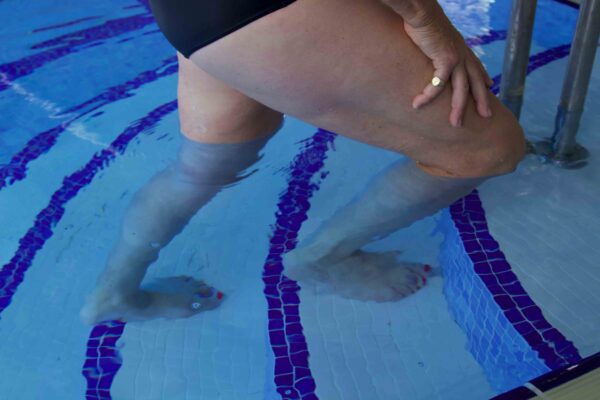
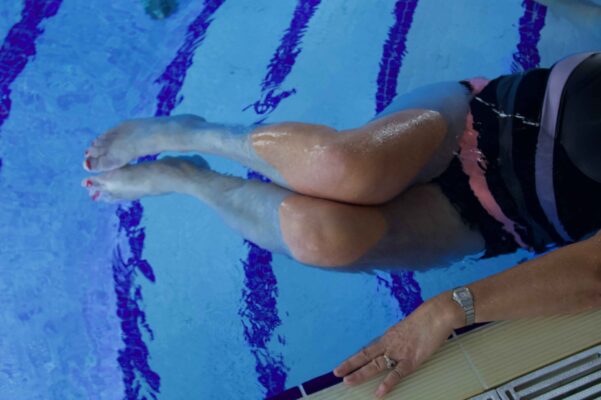
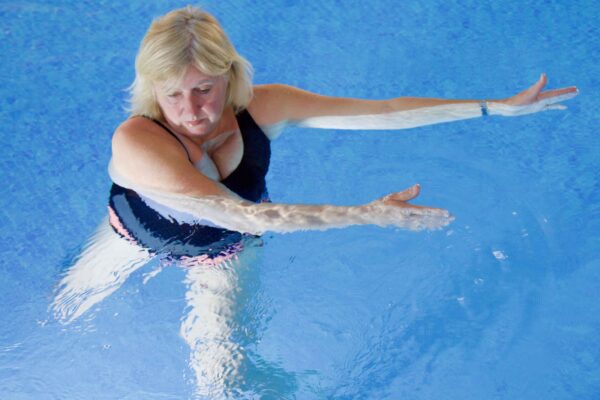
Why exercise in water?
Exercising in water is the perfect place to begin your rehabilitation following shoulder, back, hip, knee and foot and ankle surgery, or following injury to those parts of the body.
Arthritic conditions traditionally were treated with Hydrotherapy and it remains relevant today, also if you are unable to exercise out of water due to pain and stiffness you will almost certainly be able to do so in water. It is a good way to maintain movement and fitness whilst waiting for your surgery, there is no doubt that the fitter you are prior to a procedure, your recovery will be faster.
Water therapy is a whole body experience, and thus gives support and as such can also help give confidence following stroke, or with Parkinsons, MS and many other neurological conditions. Spinal injury patients do exceptionally well in a pool, it gives freedom from sitting trapped in a chair. The benefit of exercise either active or passive cannot be underestimated.
When exercising in water you will be using buoyancy to assist movement and as you become stronger, the reverse by working against it to give resistance. Finally you can add the use of equipment, webbed gloves, foam dumbbells, floats, ankle cuffs, woggles /noodles, and flippers to make the exercises harder. All these products are available via the internet, but if you do not want the out lay, you can use empty milk bottles, or water bottles lids on and empty, small easiest, largest hardest, a ball again graduated size, for resistance in fact anything that floats can be used.
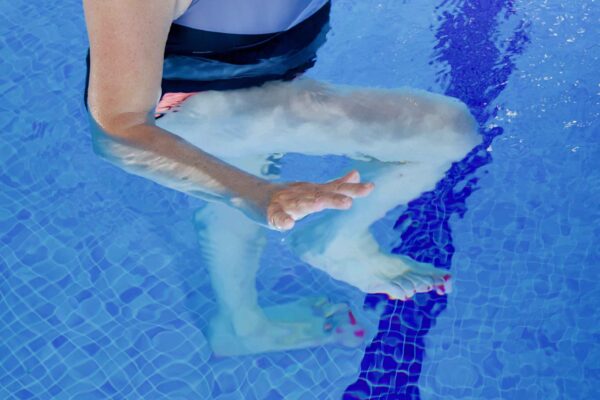
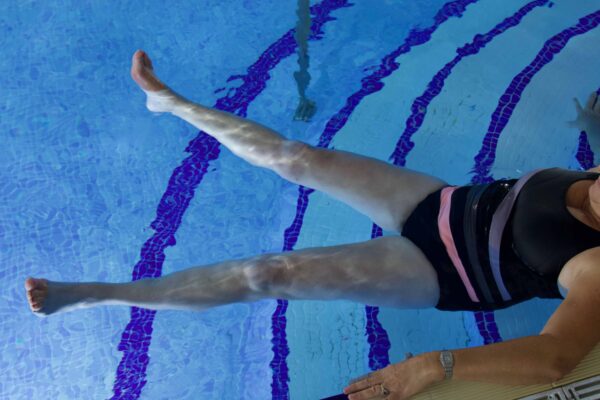
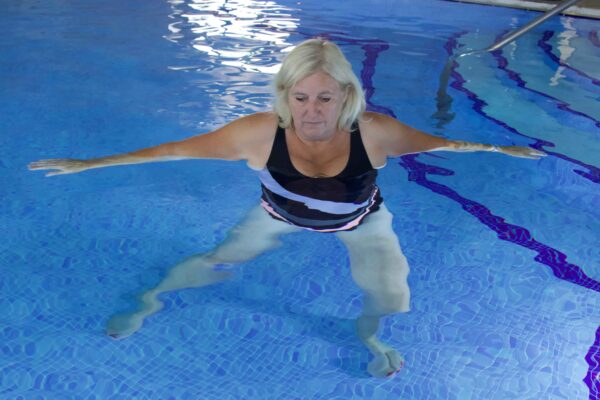
A typical session in the pool would last 30 to 40 minutes, work up to this, as it feels like fun until you get out, and then you know how hard you have worked. Remember to have a drink of water after exercising in the pool to rehydrate.
Although as you progress with your rehabilitation, you will be doing more work out of the water, the pool can still have a place in your rehab and it has hidden benefits like lowering blood pressure.
Please note that the water exercises included on this website and the accompanying videos are generic, if you are in any doubt as to their suitability for your condition or right for your personal rehabilitation, ask your consultant or treating therapist.
